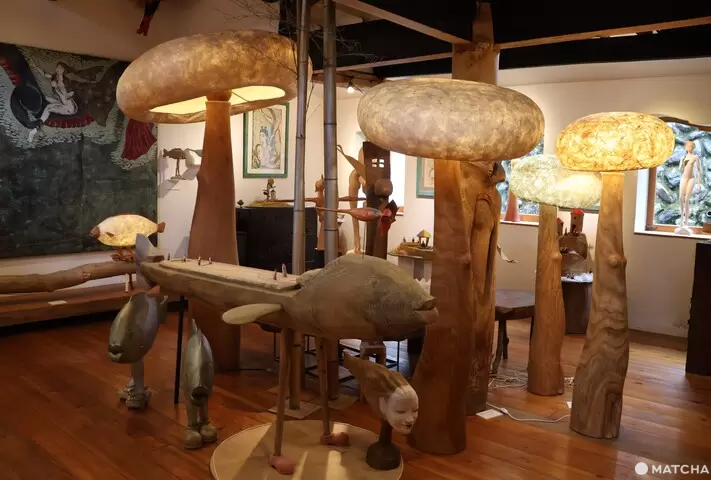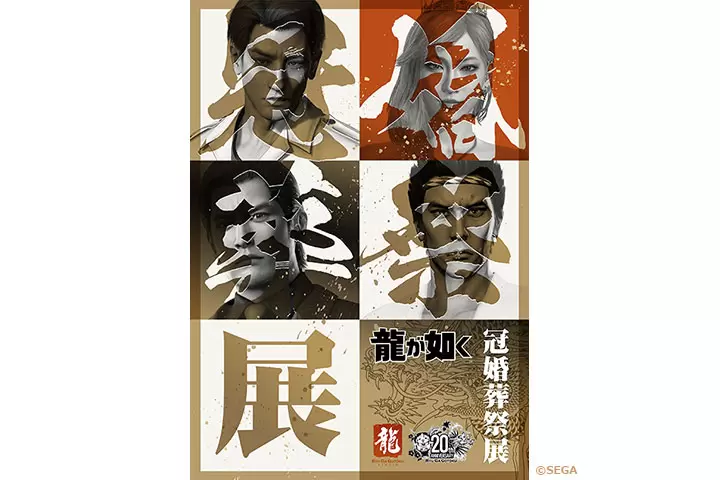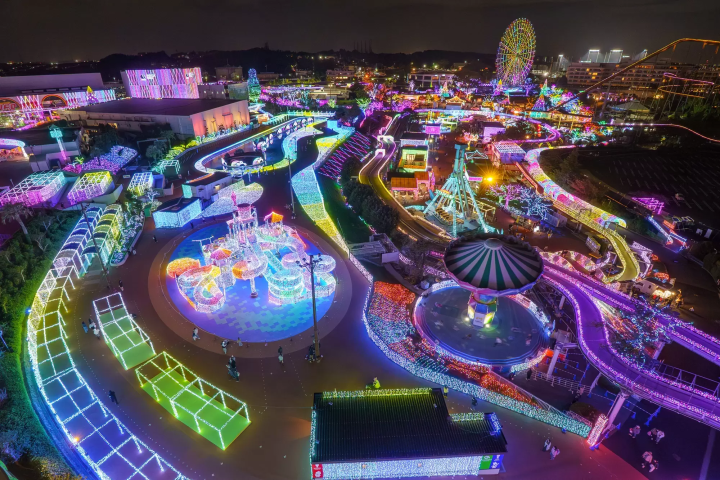A 2-Day Healing Retreat to Tokyo’s Suburbs: Akiruno and Hinohara

You’ve seen all the major spots in Tokyo, so why not head to the suburbs to Akiruno and Hinohara next? Enjoy hydrangeas, powerful waterfalls, hot springs, and more! This article provides a detailed 2-day itinerary to Akiruno and Hinohara.
Akiruno and Hinohara: Bask in Nature’s Power

Akiruno, located in west Tokyo, is easily accessible from central Tokyo. It takes about an hour and a half by car or train from Tokyo Station. While it’s not far from the capital, you can still escape from the hustle and bustle of the city and enjoy magnificent nature all around you. It’s great as a day trip, but a two-day overnight trip will guarantee a more fulfilling time.
Akigawa Valley is one of the largest tributaries of the Tama River. It stretches approximately 20 kilometers from Akiruno to Hinohara.
The fresh greenery, autumn leaves, and other seasonal sights that surround the mountain river makes this place popular. In recent years, this spot has also become popular among fishers and hikers. With a charm that draws so many people, it's a place you can enjoy no matter how many times you visit.
Hinohara, Akiruno’s neighbor, is Tokyo’s only remaining village (excluding the islands) and can be reached by car in 1.5 hours or by train in two hours from Tokyo Station. Located near Chichibu-Tama-Kai National Park, which spans the prefectures of Tokyo, Saitama, Yamanashi, and Nagano, is a lush area with more than 90% of the village consisting of forest.
The mountains surrounding Hinohara—Mt. Mitake, Mt. Mito, Mt. Odake, and Mt. Gozen—are also known as sacred grounds for shugyoso (*). Here, you can get your fill of nature’s negative ions to wash away the fatigue of daily life.
* Shugyoso: monks who study the teachings of Buddhism and are devoted to training.
Day 1: Hydrangeas, Scenic Cafes, Hidden Hot Springs
Minamisawa Hydrangea Garden


Minamisawa Hydrangea Garden is a popular spot where 10,000 hydrangeas grow. During the peak blooming season from mid-June to early July, it attracts over 10,000 visitors each year.
Hydrangeas stretch out before you as far as you can see, resembling a sea of flowers. The gentle hues of pink, blue, and white are sure to leave you moved.
This spot can be enjoyed with family, as a couple, with friends, or even on your own. It’s sure to become an unforgettable memory.



Minamisawa Hydrangea Garden came to be when Chuichi Minamizawa planted 20 hydrangea along the path to his family grave. The plants multiplied after an irrigation system was installed. Fifty years later, the number of hydrangeas has grown to over 10,000.
It’s a rare and massive flower spot that’s seldom seen in Tokyo nowadays, making it one of the most popular sightseeing spots in the suburbs.
Minamisawa Hydrangea Garden
Address: 368 Fukasawa, Akiruno, Tokyo 190-0172 (Google map)
Hours: 9:00 - 17:00 *Hydrangea season is from mid-June to early July
Admission Fee: 600 yen for adults, 400 yen for children (free for children in elementary school and younger) *Group discounts are available
Access: 10 minutes by taxi from the JR Musashi-Itsukaichi Station North Exit, or walk on foot for 40 minutes
*During hydrangea season, a shuttle bus will be available from Musashi-Itsukaichi Station. Please refer to the link below for details on operation period and timetables.
https://ajisai-yama.com/FacilityInfomation/Access (Japanese)
Official Website: https://ajisai-yama.com/ (Japanese)
Fukasawa Tiny Museum


Nestled quietly among the trees is Fukasawa Tiny Museum. This art museum, housed in an eye-catching 180-year-old traditional Japanese home that looks straight out of a fairy tale, was remodeled by artist Akimitsu Tomonaga.
Inside the museum, you’ll find wooden sculptures, woodblock prints, lamps, and other artworks created by Mr. Tomonaga on display.
Surrounded by nature on all sides, the art museum is quiet, creating a unique atmosphere that feels as if visitors have been transported to another world. Many who visit are sure to experience a moment of wonder and magic.


The cafe attached to the museum is also a must-visit. On this day, we enjoyed some freshly brewed coffee that was absolutely delicious. Our surroundings felt like a fairy tale come to life. Looking out the windows, you’ll be captivated by the beautiful plants and koi fish in the pond.
Enjoy a tranquil and elegant time with coffee and dessert. You can’t help but wish that time would stop.
Please note that some exhibits in the museum may be a bit frightening for children, so it’s a good idea to have a conversation with them beforehand to prepare them before your visit.
Fukasawa Tiny Museum
Address: 492 Fukasawa, Akiruno, Tokyo 190-0172 (Google map)
Hours: 10:00 - 17:00 (closed Wednesdays and Thursdays) *The museum is closed for the winter from December to March.
Access: 15 minutes by taxi from the JR Musashi-Itsukaichi Station North Exit, or walk on foot for 30-40 minutes.
Official Website: https://www.akirunokanko.com/?p=332 (Japanese)
Kurochaya

Picture courtesy of Kurochaya


Picture courtesy of Kurochaya
(Menu varies by season. Photos are for illustrative purposes only.)
Kurochaya is a restaurant where you can enjoy exquisite food in an atmosphere that harmoniously blends Japanese culture with beautiful nature.
Kurochaya is housed in a building that was once a silk mill, where thread was spun from cocoons. The former site employed female factory workers (*).
Another unique aspect of this restaurant is its close proximity to Akigawa Valley, offering beautiful views from your seat. The view and the atmosphere will leave you feeling refreshed, as if your soul is being purified.
The mountain river flows right in front of the restaurant, allowing guests to enjoy themselves in the waters, this is especially perfect for families with children.
Besides yamazato cuisine (*), Kurochaya also offers incredibly popular and trending desserts, delicious bento boxes available for takeout, and a menu for children.
You can take your time fully enjoying your meal even when accompanied by children.


Picture courtesy of Kurochaya
There is outdoor terrace seating overlooking the mountain river, as well as private dining rooms in the main building. Even without a reservation, you can use a private room if one is available.
This restaurant is recommended to those who want to fully enjoy a private, elegant space to themselves. You can take more stunning photos without worrying about disturbing other patrons. These photos are sure to attract attention on social media.
Sharpen all five senses and enjoy a relaxing time at Kurochaya.
*Joko: a female factory worker. These workers especially played a central role in the spinning and silk industries.
*Yamazato cuisine: a term (name) for Kurochaya’s multi-course meal that features seasonal ingredients from the mountains or river, while minimizing the use of seafood.
Kurochaya
Address: 167 Konakano, Akiruno, Tokyo 190-0165 (Google map)
Hours: Lunch 11:00 - L.O. 15:00 / Dinner 17:00 - L.O. 19:00 (closes at 21:00) *Please refer to the official website for business hours.
Access: 25 minutes on foot, or 7 minutes by taxi or bus from JR Musashi-Itsukaichi Station
Official Website: https://kurochaya.com/ (Japanese)
Lodging: Janoyu Onsen Takarasou


Janoyu Onsen Takarasou is located in Kazuma, Hinohara. This little-known ryokan (Japanese inn), housed in a 300-year-old traditional Japanese home, is worth visiting at least once. Its unique exterior, with a kayabuki roof (*), evokes a sense of nostalgia. Many people find themselves deeply drawn to the sense of time that it conveys.
Guests can enjoy the murmurs of the mountain river while bathing in the hot springs, thanks to the inn’s adjacency to Minamiakigawa River. You can experience the beauty of nature and may find yourself immersed in the sensation of all your fatigue and worries melting away.
The hot spring is called Janoyu. According to folktales, the name originates from a story about an injured serpent that healed its wounds in these waters long ago.
Additionally, the hot springs are available for day use even if you’re not staying at the inn.


For dinner, the inn’s owners will prepare a homemade meal using local wild vegetables, mushrooms, and other local ingredients. You’ll taste the rich natural blessings of the land to the fullest.
The menu includes konjac sashimi, a specialty, aromatic grilled freshwater fish, tempura made with seasonal ingredients, wagyu beef sukiyaki, and pure buckwheat soba. Each dish reflected the inn-owner couple’s attentiveness and the charm of local hot spring cuisine.
A children’s menu can also be provided, so this allows the whole family to enjoy quality time together.
After enjoying a delicious meal and the hot springs, the entire family is sure to get a good night’s sleep.
*Kayabuki roof: a traditional Japanese thatched roof covered with pampas grass and straw that has been passed down through generations.
Janoyu Onsen Takarasou
Address: 2465 Kazuma, Hinohara, Nishitama, Tokyo 190-0221 (Google map)
Hours: Closed irregularly on weekdays *Please contact the inn for information on weekday business hours.
Access: 65 minutes by bus to Kazuma from JR Musashi-Itsukaichi Station
Official Website: https://www.gotokyo.org/en/spot/404/index.html
Day 2: Powerful Waterfalls and a Museum Connecting People to Nature
Kuzuryu Falls and Ryujin Falls


Kuzuryu Falls is a well-known place for waterfall meditation training in the Kanto region, featuring a gradual vertical drop. Everyone, including beginners, people of all ages and genders, professional athletes, and international visitors alike, can train here.
Of course, you’re welcome to visit the falls even if you’re not interested in training. Being surrounded by lush greenery and enjoying the refreshing cool breeze from the clear river is well worth the visit.
The refreshing, clear air especially becomes apparent during the scorching hot summer. However, be sure to take precautions against mosquitoes and wear non-slip, comfortable shoes.
After taking in the scenery of Kuzuryu Falls, we recommend visiting the nearby Kuzuryu Shrine. You may even sense the energy of nature and its mysterious powers.

Afterwards, head to Ryujin Falls, which is not far from Kuzuryu Shrine. You’ll walk through a pristine, lush valley where plants grow abundantly. Listen to the gentle flow of the river and the rumbling sounds of the waterfall. It feels as if every cell in your body is rejoicing. The sensation of being one with nature and the rhythm of the earth is truly delightful.
Walk a little further and you’ll see Ryujin Falls thundering down from above. As you get closer, you’ll feel the cool spray of the water and be tempted to touch it. Both adults and children can enjoy playing here to their heart’s content.
Kuzuryu Falls and Ryujin Falls
Address: Kazuma, Hinohara, Nishitama, Tokyo 190-0201 (Google map)
Access: Take the bus to Kazuma from the JR Musashi-Itsukaichi Station South Exit Bus Stop #1 for one hour and 10 minutes. Alight at the Kazuma bus stop.
Official Website: http://www.tokyokuzuryujinja.net/ (Japanese)
Hinohara Toy Museum

Hinohara Toy Museum is an interactive art museum built using Hinohara's abundant wood resources. Named “Toy Museum” based on the idea that toys are often a person’s first introduction to art, the museum offers opportunities for social interactions that transcend generational boundaries and serves as an educational facility within the community.
This is a place where you can interact with nature through wood and fully appreciate its charm. The museum also plays a role in promoting local forestry.

Inside the museum, you’ll find a diverse collection of wooden toys as well as numerous exhibits that showcase Hinohara, where the museum is located.
For example, the museum offers various interactive experiences, such as simulating vegetable harvesting with toys that act as locally grown vegetables, or recreating the mountain and river landscapes of Hinohara within the museum. These activities allow visitors to learn about the nature of Hinohara while having fun.
Inside the museum, you’ll often see families having a great time, making it the perfect place to relax, play, and learn.
There are many exhibits that both children and adults can enjoy, so it's worth visiting even if you're an adult.
Hinohara Toy Museum
Address: 3783 Ozawa, Hinohara, Nishitama, Tokyo 190-0204 (Google map)
Hours: 10:00 - 16:00 (last entry at 15:30), closed Thursdays and during the New Year’s holiday
Admission Fee: 1000 yen for adults, 700 yen for children (free for infants under 6 months and persons with disabilities)
Access: Take the Nishi Tokyo Bus to Fujikura from JR Musashi-Itsukaichi Station Bus Stop #1, then alight at Ozawa (30 minutes) and walk on foot for 2 minutes
Official Website: https://www.hinohara-toymuseum.com/ (Japanese)
Travel Itinerary

We've created a two-day travel itinerary for an overnight stay in Akiruno and Hinohara. Feel free to refer and use it as a guide for your trip!
| Time | Schedule |
|
Day 1 8:00 - 11:30 |
Take the train from Tokyo Station to Musashi-Itsukaichi Station (8:08 - 9:41) → Take a taxi or drive (10-15 minutes), or take the limited-time shuttle bus that operates during hydrangea season (10:00 - 10:30) to Minamisawa Hydrangea Garden. Enjoy the beautiful hydrangeas (1 hour) |
| 11:30 - 13:00 |
After viewing the hydrangeas at Minamisawa Hydrangea Garden → Take a taxi or drive (10-15 minutes), or walk (25-30 minutes) to Fukasawa Tiny Museum. Tour the art and traditional Japanese home at Fukasawa Tiny Museum (1 hour) |
| 13:00 - 15:00 |
Depart from Fukasawa Tiny Museum → Take a taxi or drive to Kurochaya (15-20 minutes) Fully enjoy the spectacular scenery that combines a traditional Japanese home and nature, and savor delicious food (2 hours) |
| 16:00 - Day 2 |
Depart from Kurochaya → Take a taxi or drive (35 minutes), or catch the Gori 10 bus to Kazuma from the Nishikonakano bus stop and alight at Kazuma (16:09 - 17:08) → Walk (5 minutes) to Janoyu Onsen Takarasou. Have a relaxing hot spring experience and delicious food to rejuvenate both mind and body. |
|
Day 2 9:30 - 10:30 |
Depart from Janoyu Onsen Takarasou → Walk (10 minutes) to Kuzuryu Falls and Kuzuryu Shrine (45 minutes) |
| 10:30 - 11:50 |
Depart from Kuzuryu Shrine → Take the express bus for Musashi-Itsukaichi Station/Tomin no Mori from the Kazuma bus stop and alight at Onsen Center (10:43 - 10:45). Alternatively, take a taxi or drive (3 minutes), or walk (20 minutes) to reach Ryujin Falls. Enjoy the roaring waterfall and mountain scenery (30 minutes) |
| 11:50 - 15:30 |
Depart from Ryujin Falls → Take a taxi or drive (30 minutes), or catch the Gori 10 bus for Musashi-Itsukaichi Station from the Shimodaira bus stop and alight at Hossawa Falls (11:53 - 12:25). Transfer to the Go 18 bus to Fujikura and alight at Ozawa (13:25 - 13:34) → Walk (1 minute) to Hinohara Toy Museum. Enjoy experiencing local culture, nature, and the charm of wood (2 hours, including lunch) * Finally, take the 15:46 bus from the Ozawa bus stop to return to JR Musashi-Itsukaichi Station (33 minutes). We recommend concluding your day there. |
Akiruno and Hinohara: A Great Travel Destination for Families

Akiruno and Hinohara are ideal travel destinations where nature and unique culture coexist. It’s quiet with few people, making it especially perfect for family outings. Plus, it’s highly accessible, being just an hour and a half by car from Tokyo.
Admire the vibrant, beautiful hydrangeas, then visit creatively designed art museums. Afterwards, savor traditional yamazato cuisine, and unwind in a relaxing hot spring.
This two-day itinerary in Akiruno and Hinohara is sure to rejuvenate both your mind and body. Feel free to use the itinerary in this article and enjoy a short trip filled with fresh, new charms and experiences.
Sponsored by Tokyo Metropolitan Government
Many travel itineraries are being introduced on TAMASHIMA.tokyo, a sightseeing information website, to discover a “new luxury” in the Tama area and islands of Tokyo. Please feel free to check it out.
MATCHA's promotional account for corporate and local government advertising. We aim to provide useful information to our readers in an enjoyable manner.






























![[Coupon Available] Recommended Fall/Winter Wear from Scandinavian Brand "Helly Hansen"](https://resources.matcha-jp.com/resize/720x2000/2025/12/15-252920.webp)
![Deep dive into Japanese brands! A tour of famous leather shoe stores with GENSEI & Nin [Otsuka Shoes Edition]](https://resources.matcha-jp.com/resize/720x2000/2025/12/15-252972.webp)